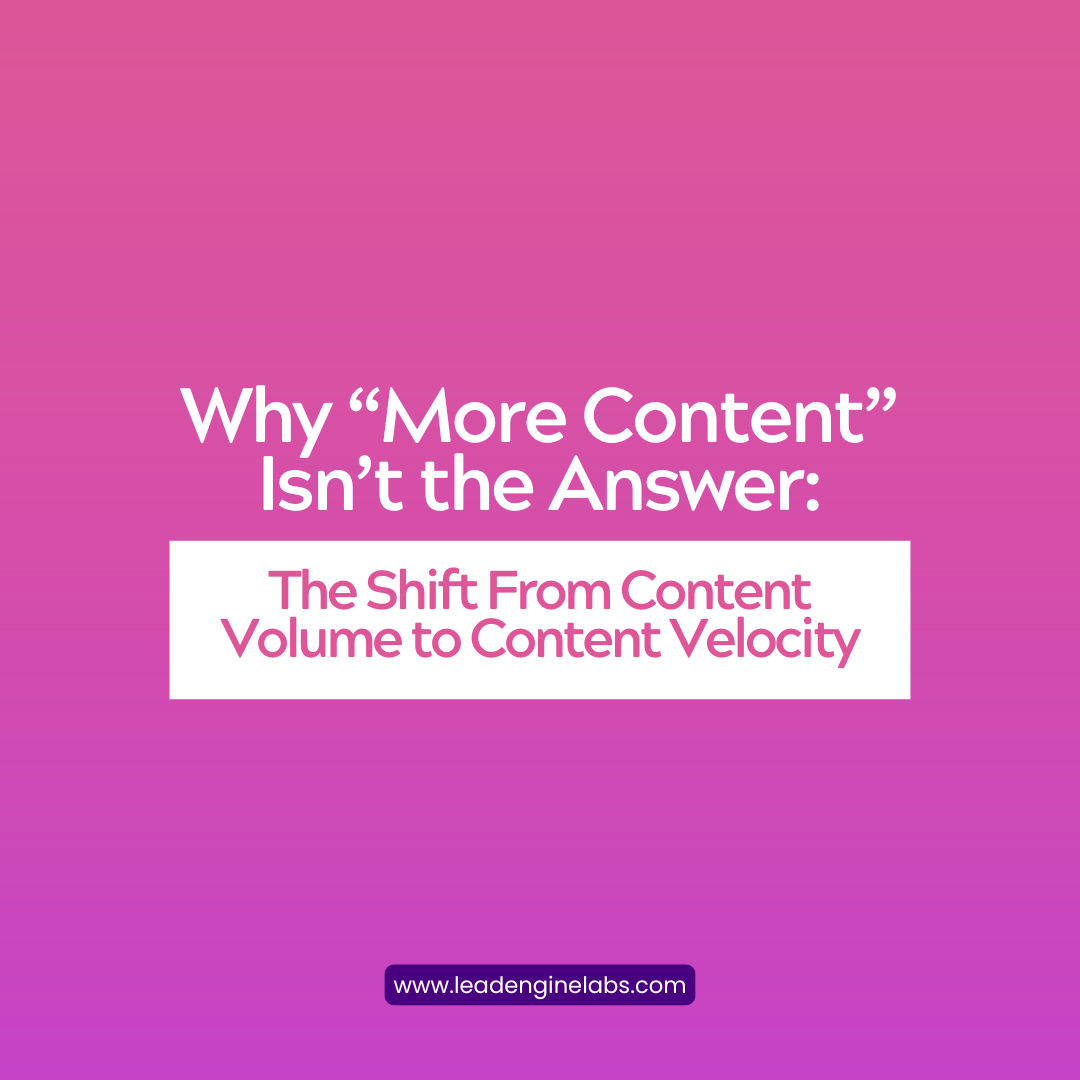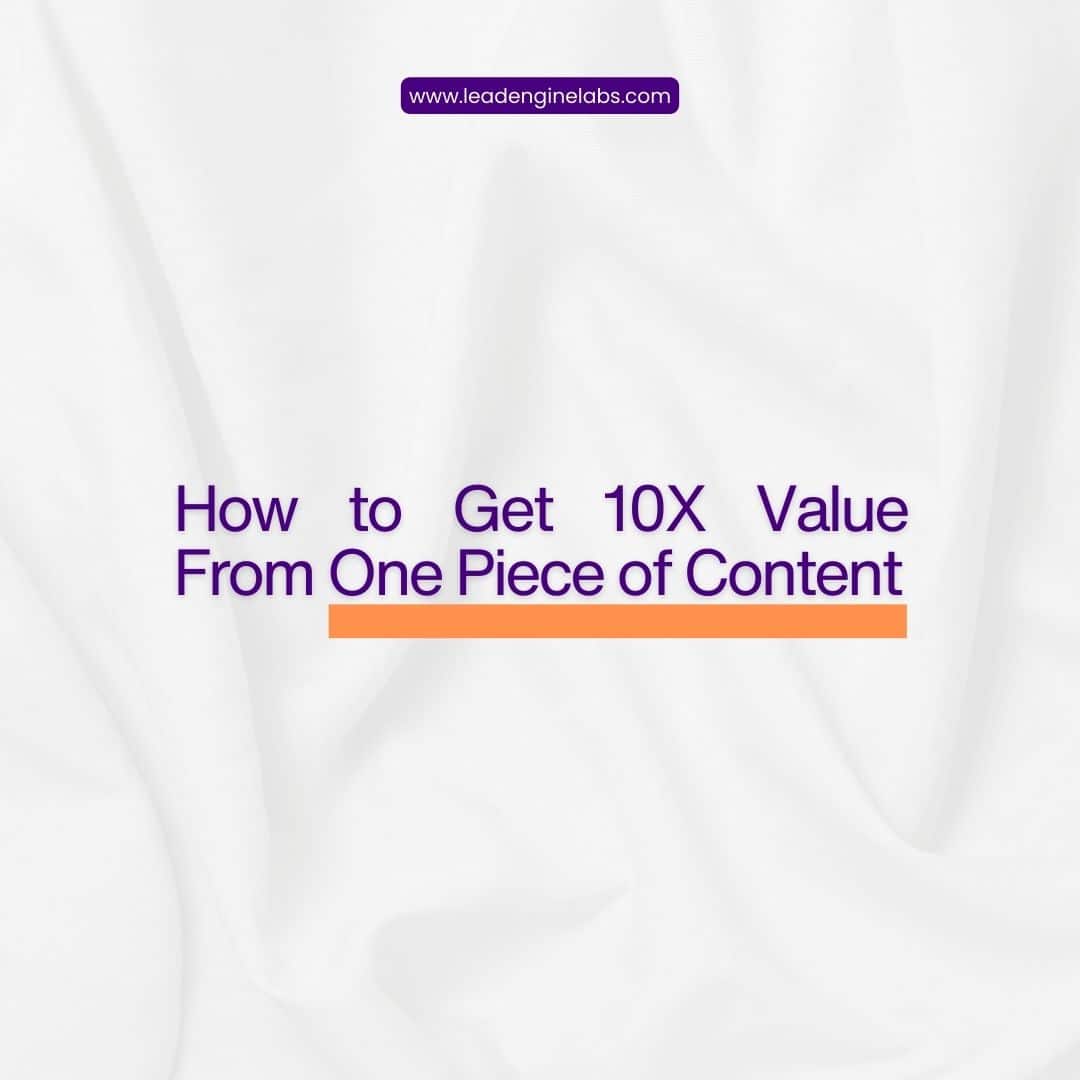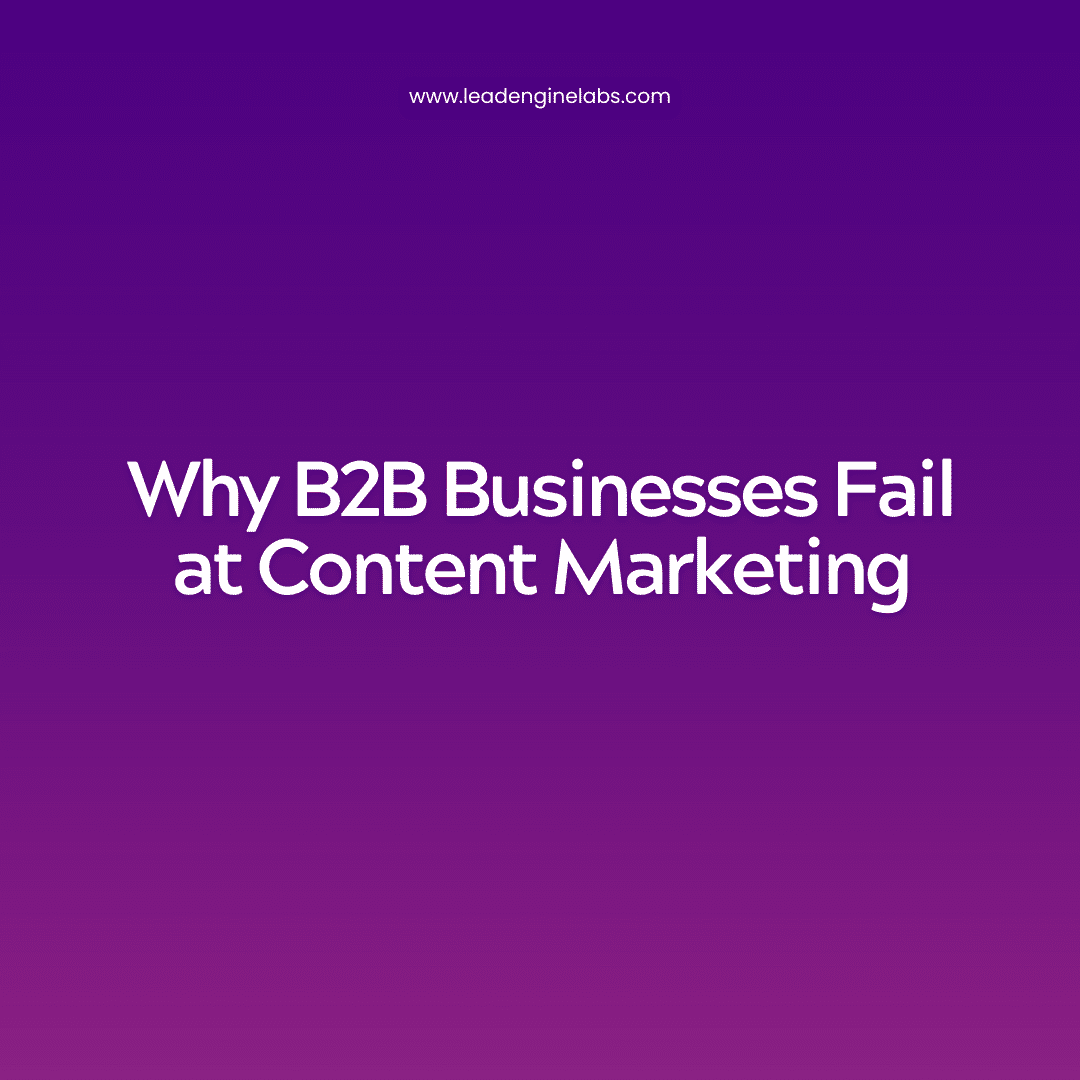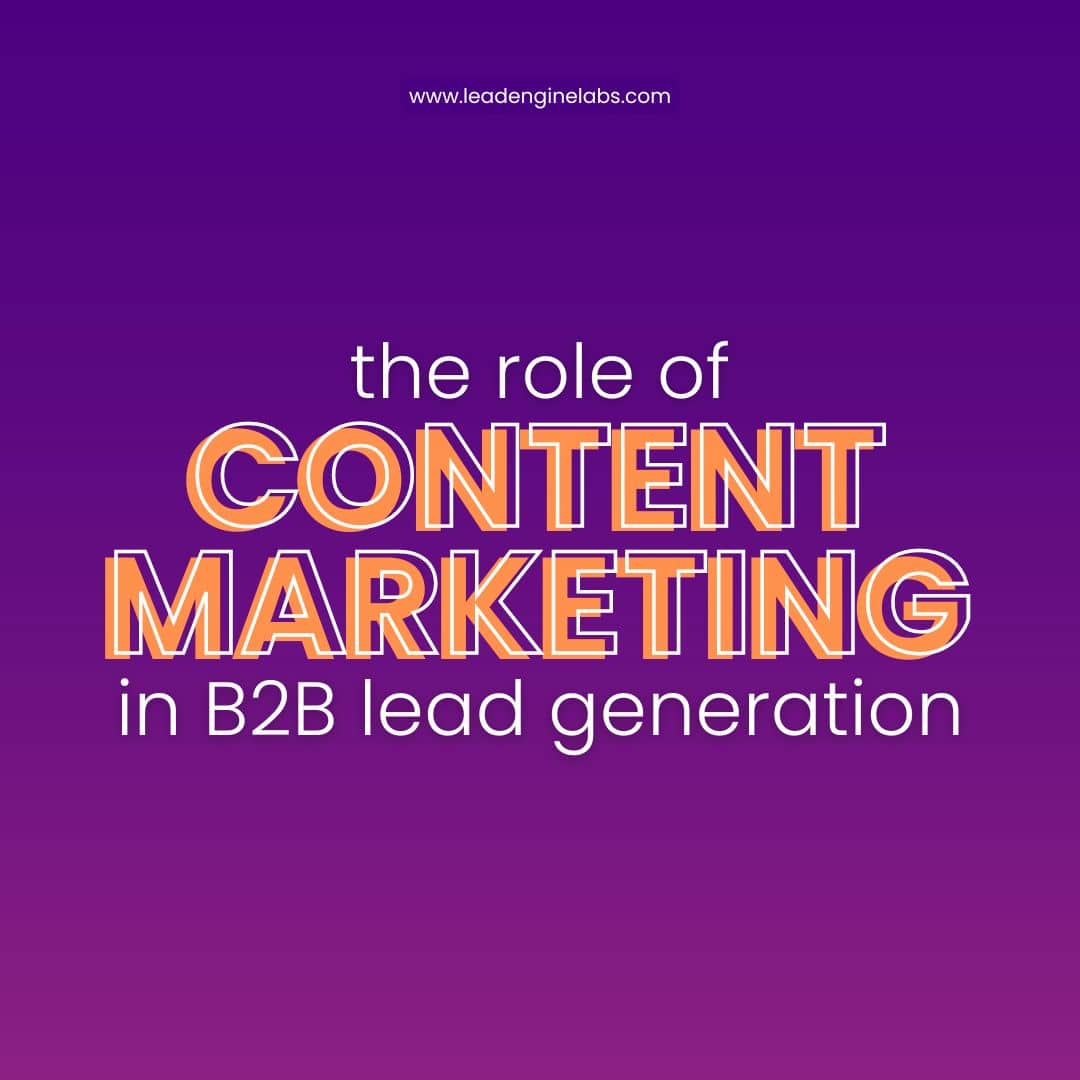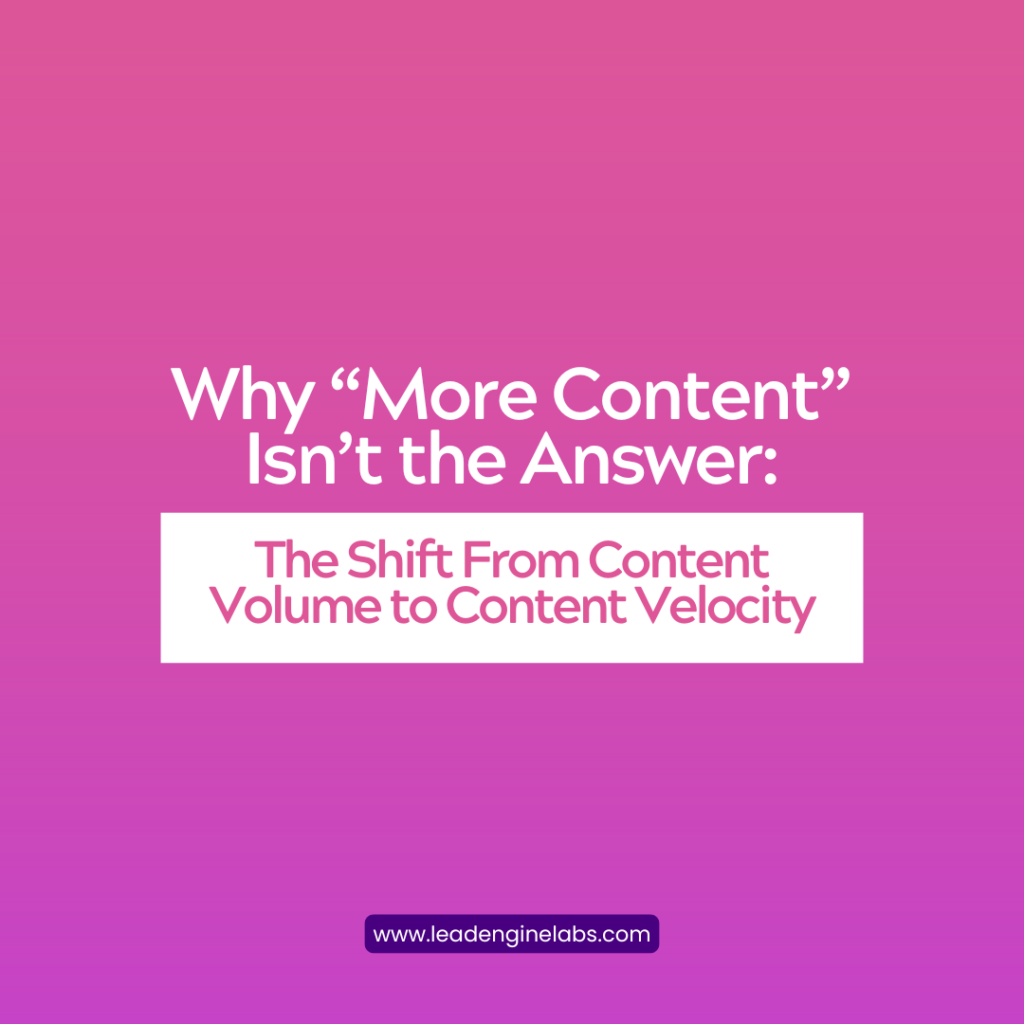
For most B2B companies, content marketing eventually hits a wall.
You start strong—writing blog posts, recording videos, sending newsletters. But over time, results slow down. Engagement dips. Pipeline stalls. And the knee-jerk reaction is always the same:
“Let’s create more content.”
But more content isn’t the answer. Not anymore.
The real problem isn’t content volume. It’s content velocity—how fast, how far, and how effectively your content moves through the market to drive conversations and conversions.
In this post, we’re breaking down why velocity beats volume, what’s killing your traction, and how to fix it.
Cold Outreach Isn’t Dead—You’re Just Doing It Wrong
Volume vs. Velocity: The Key Difference
Content Volume = Creation
- Number of blog posts published
- Number of videos released
- Number of LinkedIn posts scheduled
This is what most marketers measure. It’s easy to track. But it says nothing about impact.
Content Velocity = Traction
- How quickly your content reaches the right audience
- How often it sparks qualified conversations
- How well it moves leads through the funnel
- How long it stays relevant or resurfaces
Velocity measures motion, depth, and outcome.
Publishing five blogs a week means nothing if no one reads them, shares them, or acts on them.
Why Most B2B Teams Default to Volume
Content marketing success used to be about who could publish the most. It worked for a while.
But here’s what changed:
- Everyone is publishing.
There’s more noise than ever. Quantity alone won’t stand out. - Search is saturated.
Ranking a generic blog post without backlinks, brand authority, or distribution muscle is almost impossible. - Distribution is fragmented.
Your audience isn’t sitting in one place. They’re on Slack, YouTube, LinkedIn, Reddit, Discord, and in inboxes. - People don’t binge B2B blogs.
They binge insights. Stories. Proof. Experiences. Volume can’t fake that.
The content game shifted. Now it’s about getting attention and keeping momentum—not adding pages to your CMS.
What Kills Content Velocity
If you’re publishing consistently but not getting results, here’s what’s likely slowing your velocity:
1. Poor Distribution
You post once and move on. No repackaging. No syndication. No cross-channel reach. That’s content with no legs.
2. No Feedback Loops
You’re guessing what content should say. You’re not learning from sales calls, pipeline gaps, or customer pain points. That disconnect kills relevance.
3. Zero Repurposing Strategy
Each piece of content lives—and dies—as a one-off. No video clips. No carousels. No quotes pulled into email or social.
4. Disconnected From Funnel Motion
You create content because “you’re supposed to.” But it doesn’t feed specific funnel stages or sales plays. That makes it easy to ignore.
Velocity requires intent. Without it, you’re just filling space.
What High-Velocity Content Systems Look Like
It’s not about working more—it’s about building smarter systems that make one piece of content drive 10x impact.
1. Start With the Buyer Moment, Not the Content Format
Before you create anything, ask:
- What decision or doubt is the buyer facing right now?
- What friction is blocking them from moving forward?
- What insight, proof, or shift would unlock progress?
Then decide whether it should be a blog, a video, a carousel, a podcast clip.
Example:
If your pipeline is full of stuck deals, don’t write a generic trend report. Record a short breakdown on “Why leads stall and how to fix it”—then spin it into 5 assets.
2. Build Once, Distribute 5–10x
One long-form piece should never stay in one format.
Let’s say you film a 5-minute video explaining a problem your market struggles with. That one video becomes:
- 2–3 short clips for LinkedIn or TikTok
- A quote-based carousel
- A follow-up email to active leads
- A voiceover reel
- A blog post or newsletter
- A “mic drop” one-liner post
Same idea. Different vehicles. Maximum reach.
3. Align Every Piece to a Funnel Stage
Content velocity isn’t just about getting seen—it’s about driving movement.
Every piece should be tied to:
- Awareness
- Interest
- Consideration
- Decision
TOFU example:
“5 Expensive Marketing Mistakes Agencies Keep Repeating” — sparks interest
MOFU example:
“Case Study: How We Helped [Client] Reduce CPL by 32%” — builds trust
BOFU example:
“Here’s exactly what happens when you book a call with us” — reduces friction
The faster a piece pulls a buyer to the next step, the more velocity it has.
4. Loop In Sales, Not Just Marketing
The best-performing content often comes from sales calls—not brainstorming meetings.
Your sales team:
- Knows what prospects keep asking
- Knows which objections kill momentum
- Knows what proof seals the deal
Loop them in weekly. Turn those insights into fast-turn content that hits exactly where it matters.
Content built around the sales floor wins faster.
5. Focus on Conversations, Not Just Views
High-velocity content sparks conversations. That’s the real KPI.
- Does someone DM your founder after a post?
- Do prospects reply to your email newsletter?
- Do clients mention your LinkedIn content in meetings?
- Do you get inbound leads referencing a specific carousel or video?
You can’t scale impact if you’re chasing traffic over traction.
Metrics That Actually Matter for Content Velocity
Stop obsessing over:
- Post impressions
- Blog traffic
- Word count
- Publish volume
Start tracking:
- Time-to-lead from new content
- Sales call mentions (qualitative signals)
- Engagement from target accounts
- Shares and reposts from other experts
- Number of qualified convos sparked
Conclusion: Content That Moves > Content That Sits
If your content isn’t generating pipeline, momentum, or traction—creating more won’t fix it.
Velocity means creating less but better—then squeezing every drop of impact out of it.
At Lead Engine Labs, we help companies build content systems that move fast, punch hard, and drive deals.
If you’re tired of content that just sits there, let’s build something that moves.

